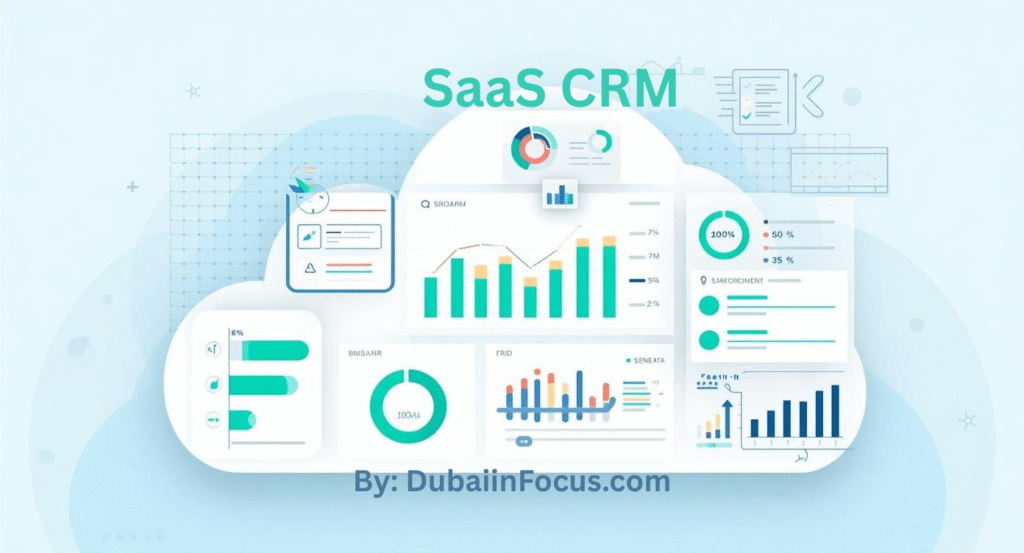How to Use Your SaaS CRM to Improve Collaboration Between Sales and Marketing Teams
Sales and marketing alignment is essential for any business aiming to grow efficiently. Yet, in many organizations, these two departments often work in silos — marketing generates leads, and sales struggles to convert them without sufficient context.
The good news? A well-implemented SaaS CRM can bridge this gap and foster seamless collaboration between sales and marketing teams. Here’s how you can make it happen.
1. Create Shared Visibility
The foundation of collaboration is transparency. Your SaaS CRM can provide both teams with a single source of truth for all customer data.
- Unified Dashboard: Build joint dashboards showing lead flow, conversion rates, and revenue attribution. This ensures that both teams are tracking the same performance metrics.
- Real-Time Updates: Enable instant visibility into lead status, customer interactions, and pipeline progress. When both teams see updates in real-time, there’s less confusion and quicker follow-ups.
- Shared Reporting: Design reports that track metrics both teams care about — like MQLs, SQLs, and conversion rates — keeping everyone focused on shared goals.
2. Establish Clear Lead Management Processes
A common friction point between sales and marketing comes from unclear lead handoffs. Your CRM can simplify this process through automation and standardization.
- Lead Scoring Alignment: Collaborate on defining what makes a lead “qualified.” Use CRM lead scoring tools based on engagement levels, demographics, or behavior.
- Defined Handoff Protocols: Set clear rules for when marketing hands over a lead to sales — for example, when a prospect hits a certain score or requests a demo.
- Lead Status Tracking: Use standardized stages in your CRM (New, Contacted, Qualified, Proposal, Closed) so both teams speak the same language.
- Feedback Loops: Allow sales to rate or comment on lead quality directly in the CRM, giving marketing real-time insights to fine-tune campaigns.
3. Leverage CRM Communication Tools
A modern CRM is more than a data repository — it’s a collaboration hub that facilitates smoother communication between departments.
- Internal Notes & Comments: Encourage teams to use notes or comment sections to share context about prospects, ensuring no insights are lost.
- Activity Tracking: Record every touchpoint — calls, emails, meetings — so both teams can see the full customer journey and coordinate follow-ups effectively.
- Task Assignments: Use CRM task features to assign and monitor responsibilities between teams, such as follow-ups or content requests.
- Automated Notifications: Set up alerts for key lead milestones, like when a contact downloads a whitepaper or fills out a form, ensuring sales can act promptly.
4. Align on Content and Messaging
Consistent communication helps build trust with prospects. Your CRM can ensure message alignment between marketing campaigns and sales outreach.
- Content Usage Tracking: Identify which marketing materials sales actually use and which perform best, helping marketing produce more effective resources.
- Campaign Attribution: Link leads and closed deals back to specific campaigns, so marketing can see which efforts drive real revenue.
- Centralized Collateral: Store all approved content — sales decks, brochures, and email templates — within the CRM to maintain consistency and avoid mixed messaging.
5. Set Joint Goals and Shared Metrics
To truly align, both teams need to measure success in the same way. Your CRM can bring transparency to performance metrics and outcomes.
- Shared KPIs: Track key performance indicators that reflect joint efforts — such as conversion rates, revenue contribution, and customer acquisition cost.
- Revenue Attribution: Use CRM analytics to showcase how marketing campaigns contribute to closed deals, promoting accountability and shared ownership.
- Regular Review Meetings: Schedule weekly or monthly sessions where both teams analyze CRM dashboards together, discuss challenges, and adjust strategies.
Final Thoughts
When sales and marketing teams collaborate through your SaaS CRM, they can work smarter, respond faster, and drive greater revenue growth.
By integrating communication, lead management, content alignment, and shared analytics within your CRM, you’ll build a culture of transparency and teamwork — turning data into actionable results.

